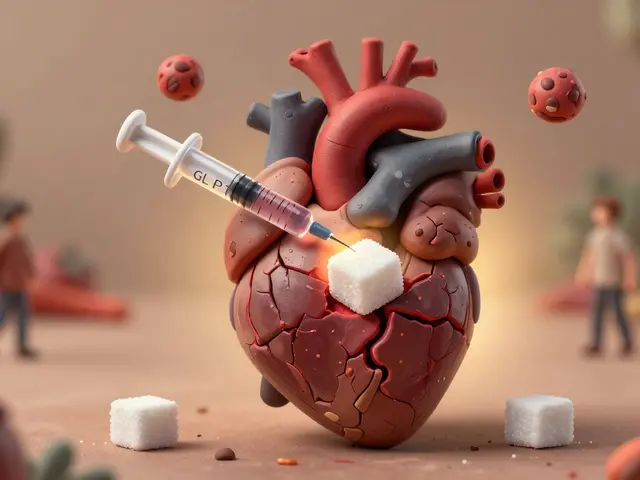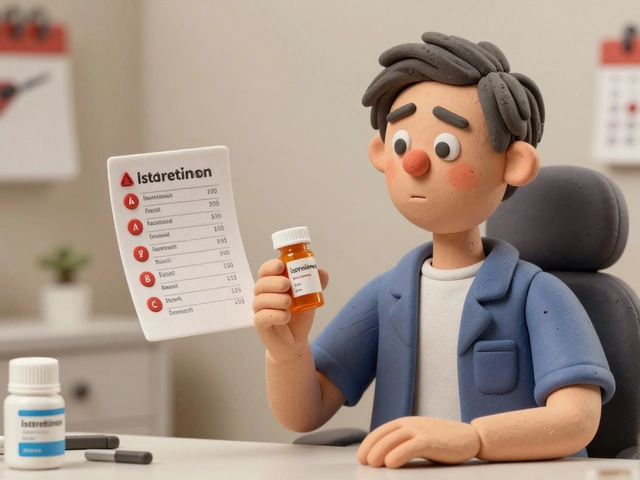Understanding the Link Between Diabetes Type 2 and High Blood Pressure
Living with diabetes type 2 can be challenging, and it's essential to understand the various health issues that can arise as a result of this condition. One such issue is the connection between diabetes type 2 and high blood pressure. In this article, we will explore the link between these two health concerns, examine the potential causes of this connection, and discuss ways to manage and prevent high blood pressure in individuals with diabetes type 2.
How Diabetes Type 2 and High Blood Pressure are Related
When you have diabetes, your body is unable to produce or use insulin effectively. Insulin is a hormone that helps regulate the amount of glucose (sugar) in your bloodstream. Without enough insulin, your blood sugar levels can become too high, leading to various health problems, including high blood pressure. High blood pressure, also known as hypertension, occurs when the force of blood flowing through your blood vessels is consistently too high.
Studies have shown that people with diabetes are more likely to develop high blood pressure than those without the condition. In fact, about two-thirds of people with diabetes also have high blood pressure. The relationship between these two conditions is complex and not yet completely understood. However, there are several factors that likely contribute to this connection.
The Role of Insulin Resistance in High Blood Pressure
Insulin resistance, a key factor in the development of diabetes type 2, can also contribute to high blood pressure. When your body becomes resistant to insulin, your cells don't respond properly to the hormone, leading to higher blood sugar levels. This can cause your blood vessels to become stiff and less elastic, which makes it more difficult for blood to flow through them smoothly.
As a result, your heart has to work harder to pump blood, leading to increased pressure on the walls of your blood vessels. Over time, this can damage your blood vessels and increase your risk of developing high blood pressure.
Obesity: A Common Factor in Diabetes and Hypertension
Obesity is a significant risk factor for both diabetes type 2 and high blood pressure. Excess body weight can lead to increased insulin resistance, making it more difficult for your body to control blood sugar levels. Additionally, obesity can cause your kidneys to retain more salt and water than they should, leading to higher blood volume and increased pressure on your blood vessels.
Losing weight, even a small amount, can help improve insulin sensitivity and lower blood pressure. By adopting a healthy diet and engaging in regular physical activity, you can effectively manage both conditions and reduce your risk of complications.
Impact of High Blood Pressure on Diabetic Kidney Disease
High blood pressure is a leading cause of kidney disease in people with diabetes. The increased pressure on your blood vessels can damage the tiny blood vessels in your kidneys, impairing their ability to filter waste and excess fluid from your blood.
Over time, this damage can lead to a decrease in kidney function and, ultimately, kidney failure. Managing your blood pressure is crucial to protecting your kidneys and preventing further complications from diabetes.
Monitoring and Managing Blood Pressure in Diabetic Patients
Regularly monitoring your blood pressure is essential for individuals with diabetes type 2. Keeping track of your blood pressure readings can help you and your healthcare provider identify any concerning trends and adjust your treatment plan accordingly.
Managing high blood pressure typically involves a combination of lifestyle changes and medications. Adopting a healthy diet, engaging in regular exercise, reducing stress, and quitting smoking can all help to lower your blood pressure. Your healthcare provider may also prescribe medications such as ACE inhibitors, beta-blockers, or calcium channel blockers to help control your blood pressure levels.
Preventing High Blood Pressure in People with Diabetes
Preventing high blood pressure is crucial for individuals with diabetes type 2, as it can help reduce the risk of complications and improve overall health. Some key preventive measures include:
Maintaining a Healthy Weight
Losing weight, if necessary, and maintaining a healthy weight can significantly improve blood pressure levels and reduce the risk of developing hypertension. Aim for a slow and steady weight loss through a balanced diet and regular physical activity.
Regular Exercise
Engaging in at least 150 minutes of moderate-intensity aerobic activity or 75 minutes of vigorous-intensity aerobic activity per week can help lower blood pressure and improve heart health.
Eating a Balanced Diet
Following a diet rich in fruits, vegetables, whole grains, lean protein, and low-fat dairy products can help maintain healthy blood pressure levels. Limiting sodium intake and consuming potassium-rich foods can also help to prevent hypertension.
Managing Stress
Practicing stress-reduction techniques, such as deep breathing exercises, meditation, or yoga, can help lower blood pressure levels and improve overall well-being.
By understanding the connection between diabetes type 2 and high blood pressure, you can take the necessary steps to manage and prevent these conditions, ultimately improving your overall health and quality of life.







Mike Peuerböck
The intricate dance between glucose regulation and vascular tone reveals a tapestry of physiological interplay. When insulin signaling wanes the endothelium sighs under increased shear stress prompting vasoconstriction. Elevated blood glucose acts as a stealthy saboteur damaging nitric oxide pathways and stiffening arterial walls. This rigidity forces the heart to pump with greater vigor raising systolic pressure. Moreover adipose tissue releases inflammatory cytokines that further erode vascular compliance. The renal system sensing hyperosmolarity retains sodium expanding plasma volume and amplifying pressure. Lifestyle factors such as sedentary habits and processed diets accelerate these cascades. Weight reduction even modest can reverse insulin resistance and restore arterial elasticity. Regular aerobic exercise enhances endothelial function through shear‑induced nitric oxide release. Dietary patterns rich in potassium and low in sodium support natriuresis and blood pressure normalization. Pharmacologic agents like ACE inhibitors interrupt the renin‑angiotensin axis offering renal protection. Continuous blood pressure monitoring empowers patients to detect early deviations. Education on self‑management fosters adherence to medication and lifestyle regimens. Collaboration between endocrinologists and cardiologists ensures comprehensive care. Ultimately mastering the synergy of metabolic and circulatory health can stave off the twin specters of diabetes complications and hypertension.
Simon Waters
They tell us high blood pressure is just a side effect of diabetes but the real story is hidden. Big pharma pushes meds to keep us dependent and the data they release is filtered. Lifestyle advice is buried under a mountain of advertisements. The link between sugar and blood pressure is more direct than they admit.
Vikas Kumar
Our nation has been battling these health crises while western powers profit from our suffering. The western diet they export is flooding our streets and raising both sugar and salt levels. We must reclaim our traditional foods to protect our blood pressure and blood sugar.
Celeste Flynn
Monitoring both blood glucose and blood pressure at the same time can reveal patterns that single measurements miss. Aim for a target below 130/80 mmHg while keeping HbA1c under 7 percent for optimal outcomes. Adjusting medication doses based on these trends often improves kidney function over the long term.
Shan Reddy
Got it thanks for the tip.
CASEY PERRY
Insulin resistance precipitates endothelial dysfunction via reduced phosphatidylinositol 3‑kinase activity. Hyperinsulinemia enhances sympathetic outflow elevating peripheral vascular resistance. Sodium reabsorption in the proximal tubule is augmented through up‑regulation of Na⁺/H⁺ exchangers. ACE inhibition mitigates angiotensin II‑mediated vasoconstriction attenuating hypertensive sequelae. Integrated care pathways should incorporate GLP‑1 receptor agonists to synergistically address glycemic and pressure parameters.
Naomi Shimberg
While the mechanistic pathways described are scientifically valid they overlook the socio‑economic determinants that drive patient adherence. The emphasis on pharmacotherapy marginalizes the impact of dietary culture. Moreover the suggested GLP‑1 receptor agonists are often inaccessible to underserved populations. A more equitable approach would prioritize community‑based interventions over costly molecular therapies.
kenny lastimosa
The body can be seen as a microcosm wherein metabolic and hemodynamic forces coalesce. When one variable drifts the others are compelled to adjust often at a hidden cost. Diabetes and hypertension thus become dialogues rather than isolated ailments. Observing these dialogues invites a broader contemplation of balance. Perhaps the true remedy lies in restoring harmony rather than suppressing symptoms. In that sense lifestyle becomes a philosophy not merely a regimen.